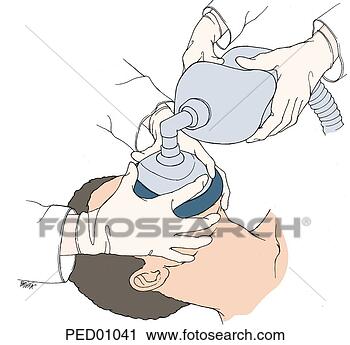Inspecting Victim
1. Personal safety : using gloves
2. Check victim or response : shaking both shoulder, ask if his okay or not, shouting out his name.
3. If the victim respond, leave in a position and try assess what is wrong with him
4. if the victim does not respond, turn the victim on the back and shout for help.
5. clear the airway for any obstruction. Maintain patient airway.
6. use either jaw thrust maneuver, head tilt chin lift of insertion of oropharyngeal airway.
7. access breathing : look, listen and feel
8. check for breathing and assess carotid pulse.
9. if no pulse or sign of life : start CPR immediately.
method 1 : Head Tilt Chin Lift
1. place your hand on his forehead, gently tilt his head back.
2. with your fingertips on other hand, under the point of patient chin, lift chin to open airway.
3. hold the airway open, put your ear to his mouth. Listen, feel, and look for breathing for no more than 10 seconds.
click head tilt chin lift
method 2 : Jaw Thrust
1. apply both your hand of 4 fingers to the angle of his mandible on both sides.
2. apply both thumbs on the chin keeping the mouth open. Then listen, feel and look for the breathing movements and sound of patient.
click jaw thrust
Method 3 : Oropharyngeal airway insertion.
1. identify need for guedel airway( if the airway is obstructed or patient is unconscious).
2. size the guedal airway measuring distance from the incisors to the angle of jaw. (2 for small adult, 3 for medium adult, 4 for large adult)
3. insert guedel airway so that its concave side faces away from the tongue.
4. insert airway into tongue to one third of its length. gently pushing airway further in it and rotate 180 degree.
5. choose appropiate sized bag-valve mask.
method 4 : mouth to mouth breathing
1. check victims mouth and remove any obstruction
2. pinch soft part of victims nose using the index finger and thumb on the hand is placed on his forehead maintaining head tilt.
3. allow his mouth to open and maintain chin lift.
4. take a normal breath and place your lips around his mouth making sure a good seal.
5. blow steadily into his mouth while watching for his chest to rise.
6. maintain head tilt chin lift. take away your mouth away and watch for hi eldest chest to fall.
7. deliver second rescue breath and return to chest compression.
8. continue chest compression and rescue breath at ratio 30:2
9. stop checking victim only if he starts breathing normally.
10 continue resuscitation until qualified help arrives or until patient normally breath or until exhausted.
method 5 : bag valve ventilation
1. choose appropriate size bag valve
2. attach bag valve to oxygen supply.
3. hold the mask over his face. thumb on his nose, support the jaw with middle and ring fingers, ensure tight seal.
4. compress the bag
5. look for rise in chest
6. ventilate at rate of 10 compression on bag per minute.
method 6 : cardiac compression
1. interlocked hand in the middle lower half of the sternum.
2. position shoulder vertically above victim chest and straight arm depress the chest by 4-5cm aiming 100 compression per minute.
3. after each compression, release the pressure on chest without losing contact between your hands and sternum.
4. give 30 chest compression followed by 2 ventilations.
5. only stop compression for debrillation or pulse check.
click cardiac compression
method 7 : recovery position
1. kneel beside the victim and makesure both legs are straight
2. place arm nearest to you out at right angle to his body, elbow bent with hand palm uppermost,
3. bring far arm across the chest and hold the back of the hand against the victim's check nearest to you.
4. with the other hand, grasp the far leg just above the knee and pull it up keeping the foot on the ground.
5. keeping his hand pressing against his cheek, pull on the far leg to roll the victims toward you.
6. adjust upper leg so that both hip and knee are bent at right angle.
7. tilt the head back, ensure pathway remain open
8. call 999
click recovery position



Post a Comment